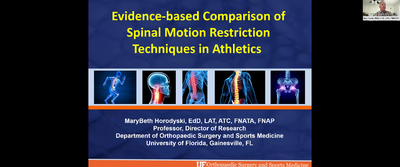AI Chat Bot
Evidence-based Comparison of Spine Motion Restriction (SMR) Techniques in Athletics › Learning Material
Presentation (Video)
Updated Jan 22, 2024
Copyright © 2025 Action Medicine Consultants, LLC
___MESSAGE___
___MESSAGE___


